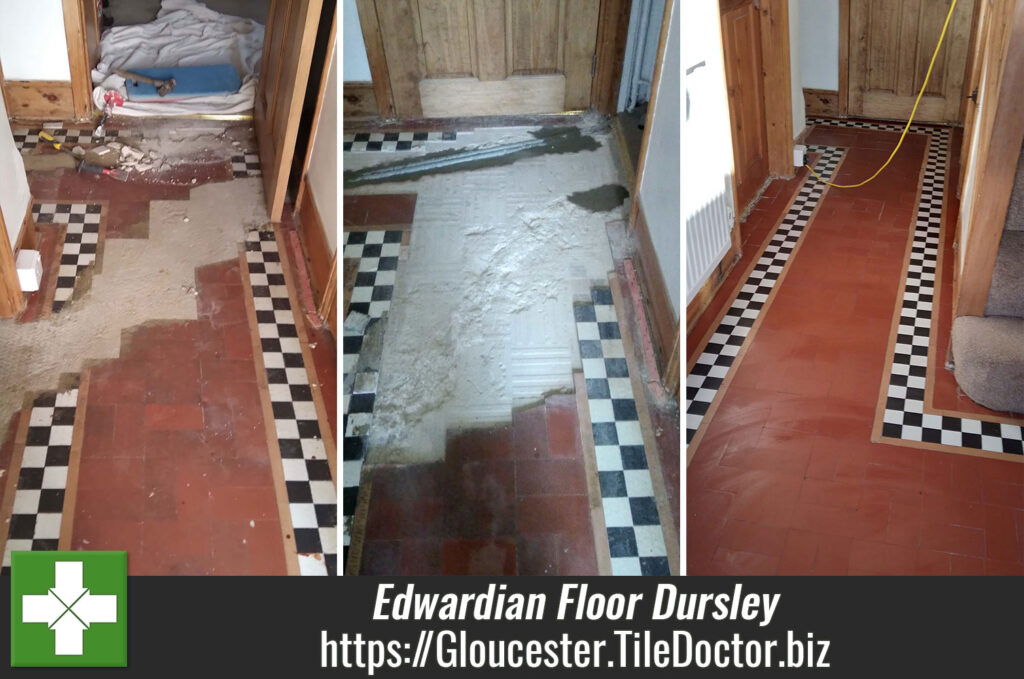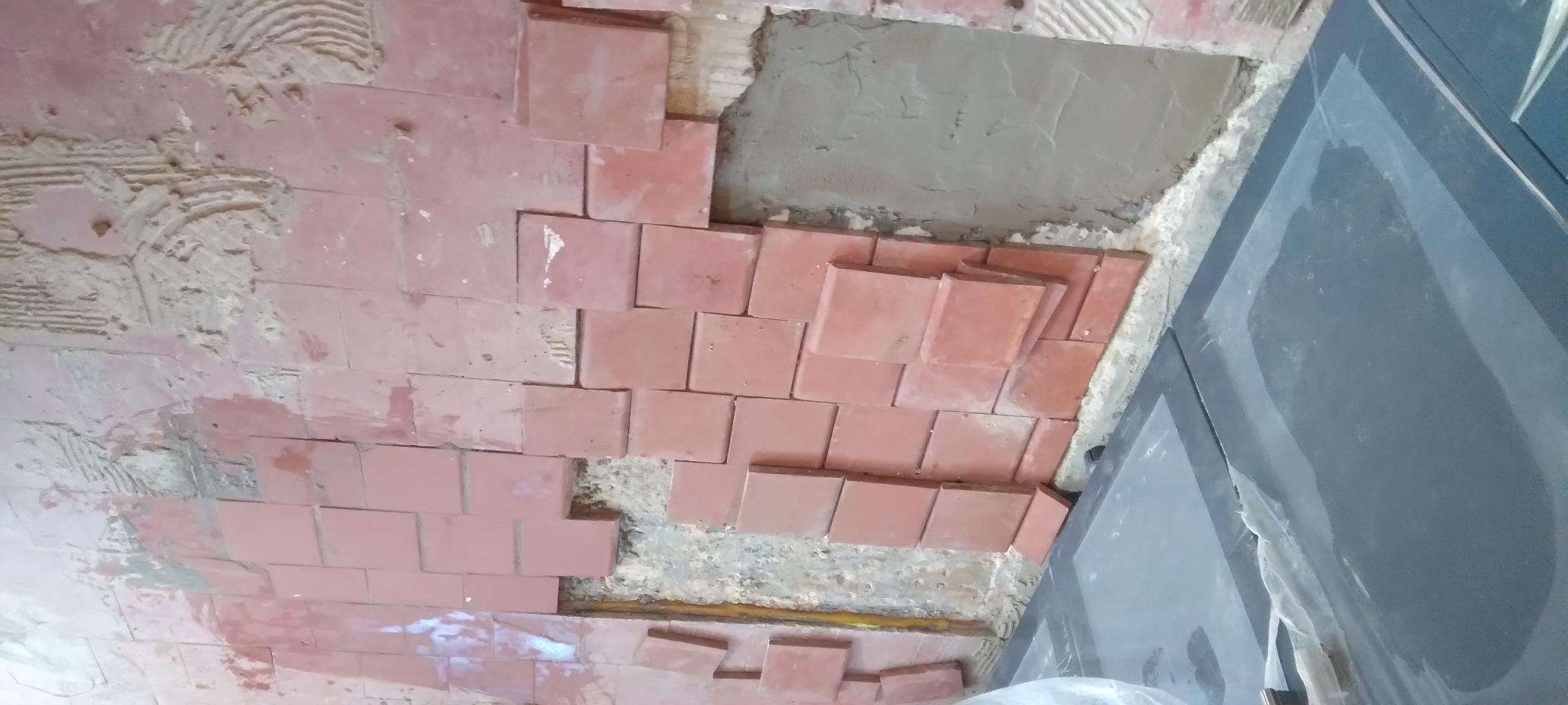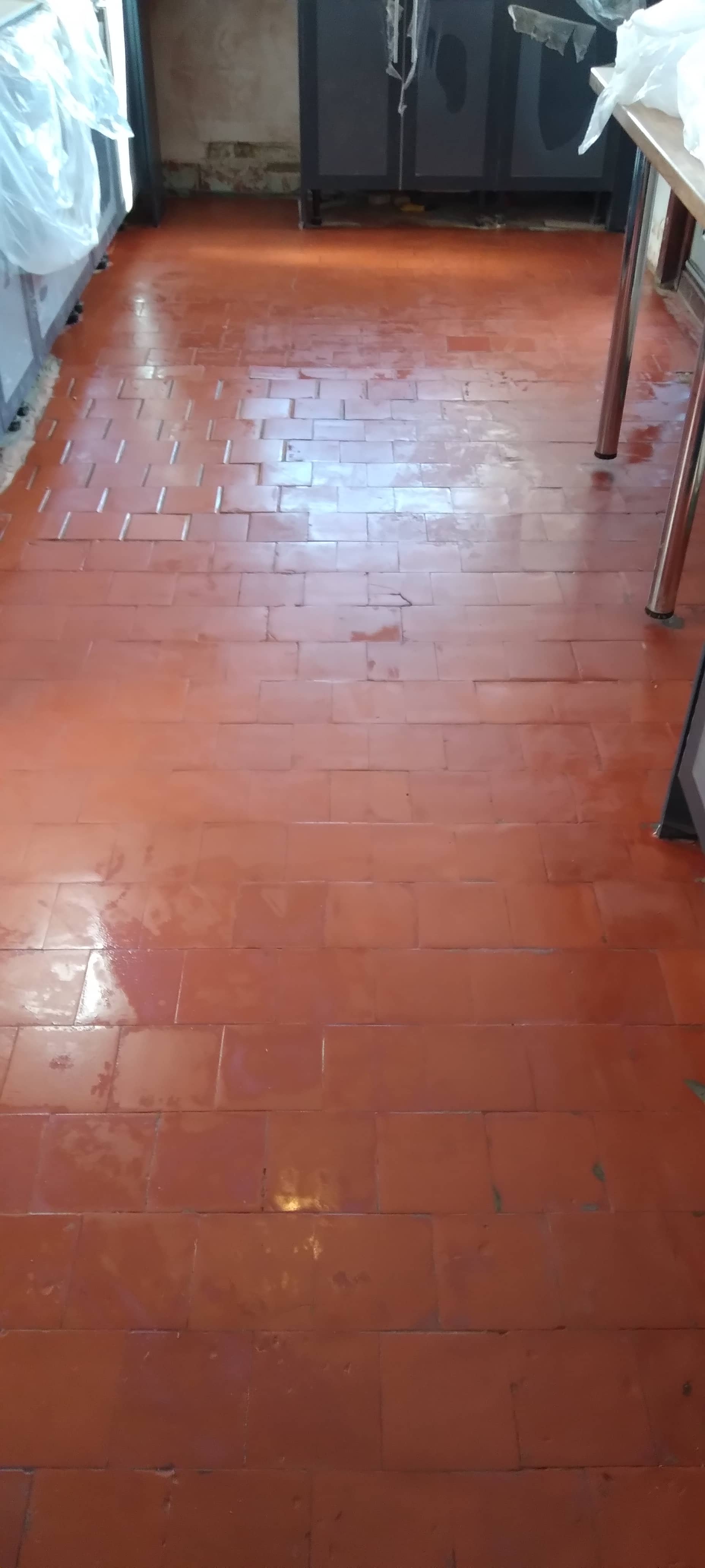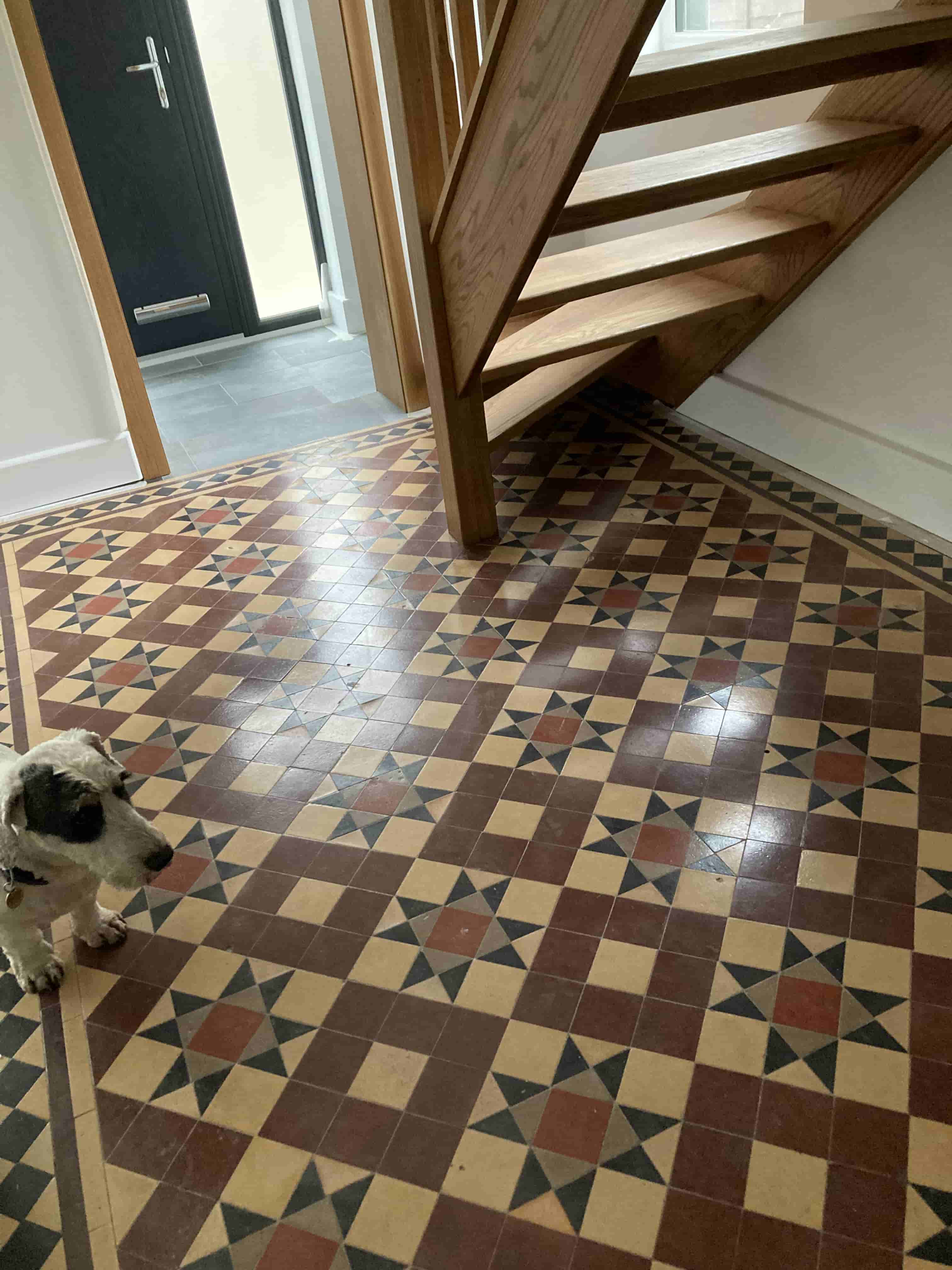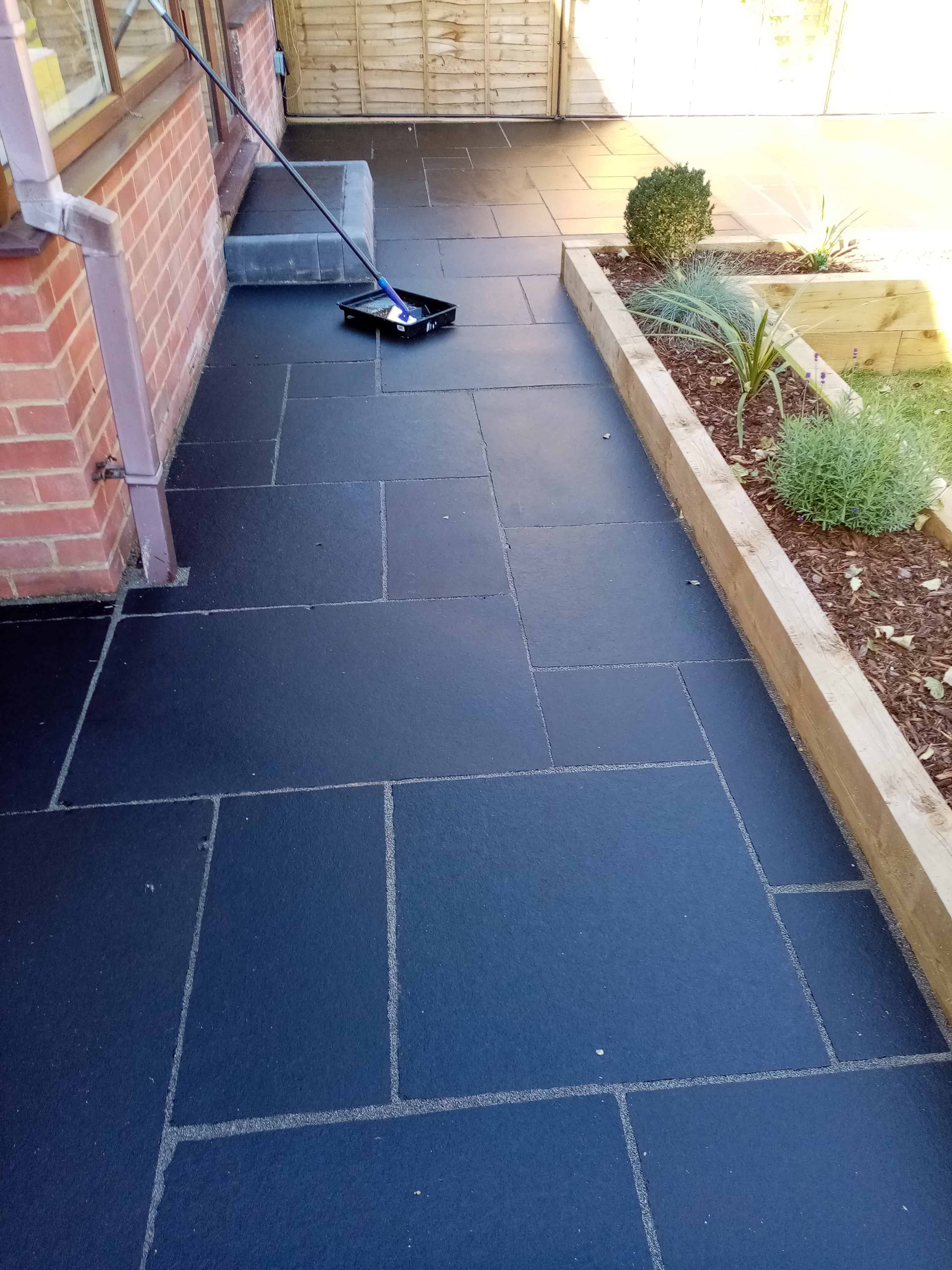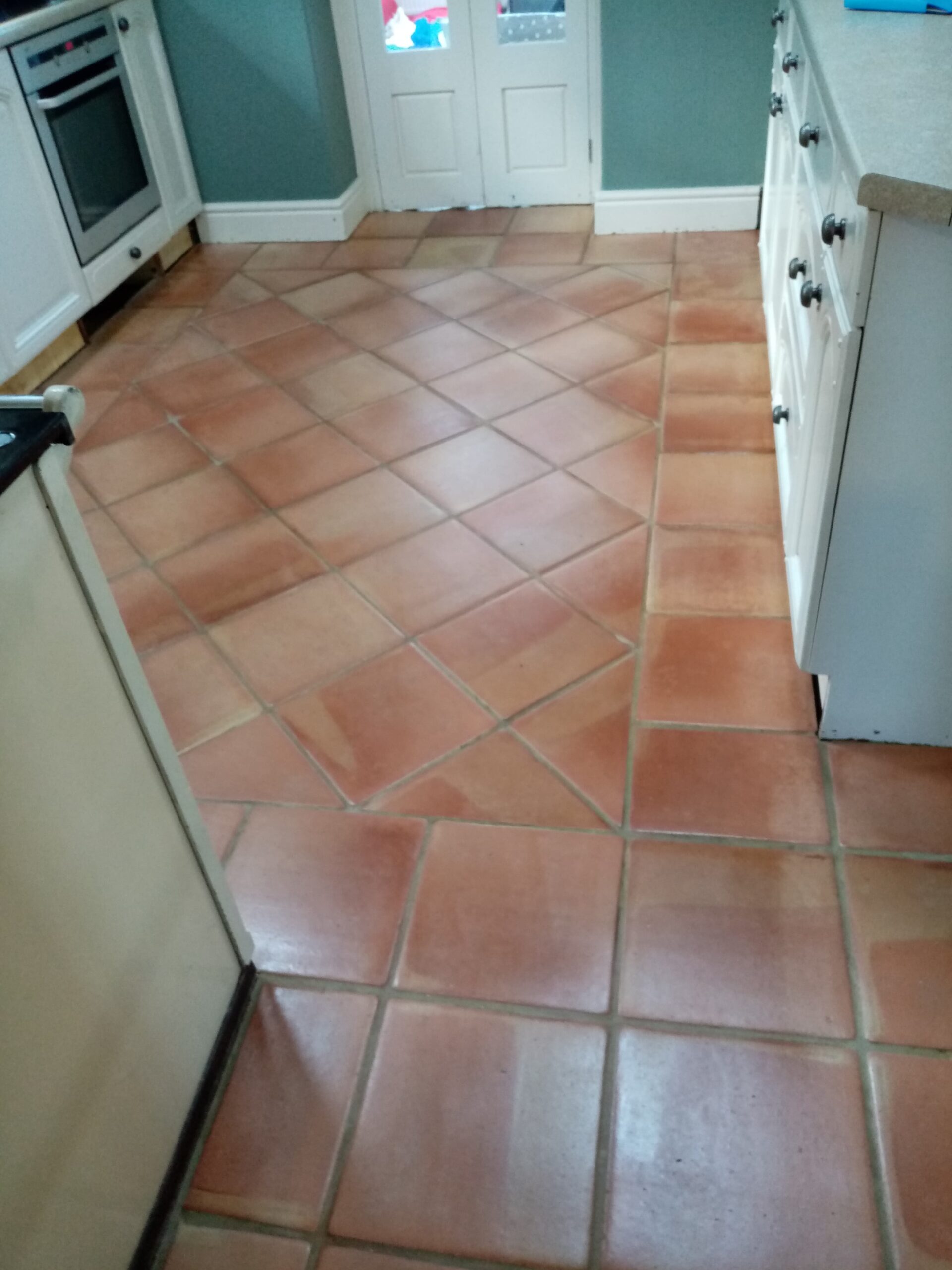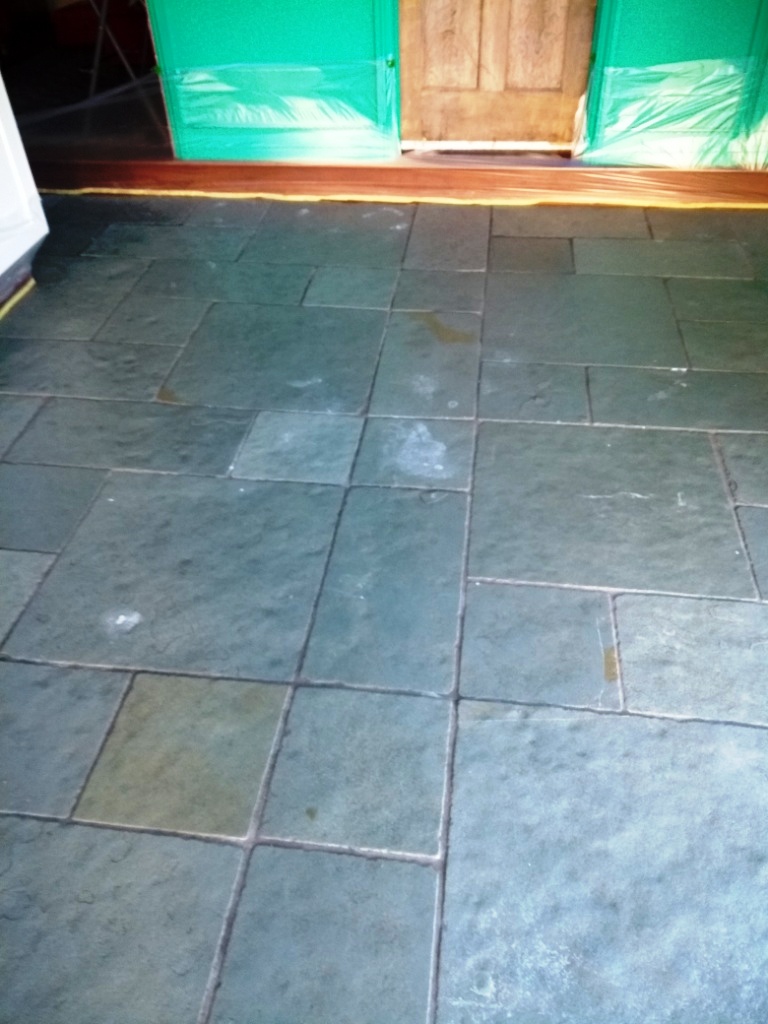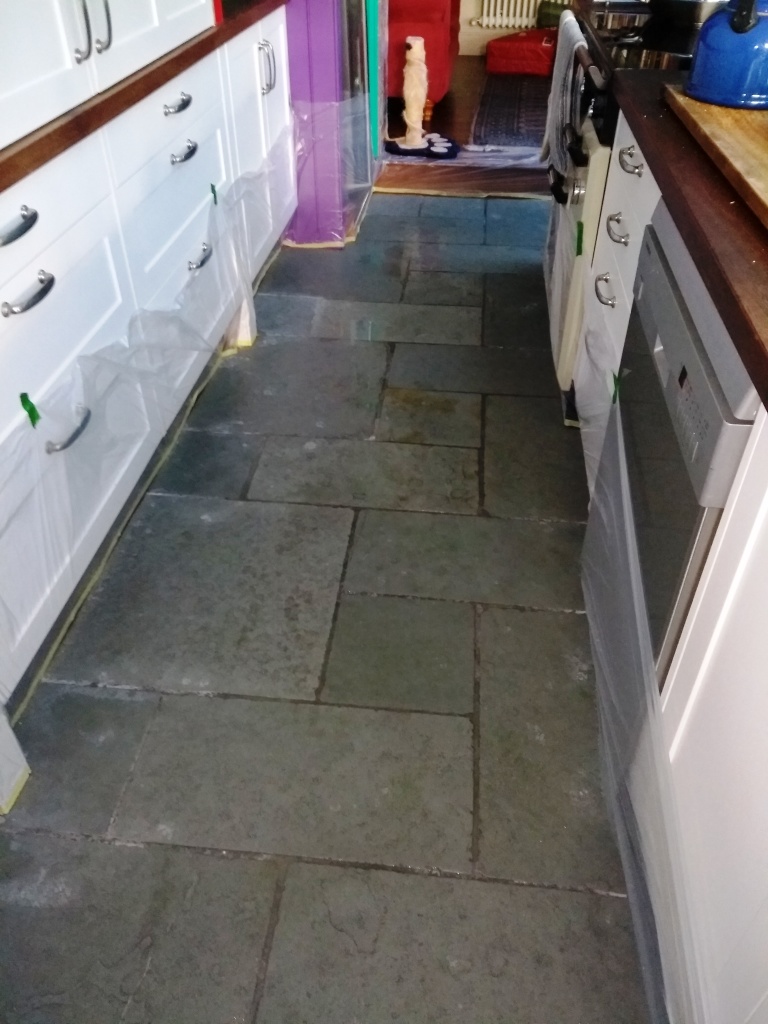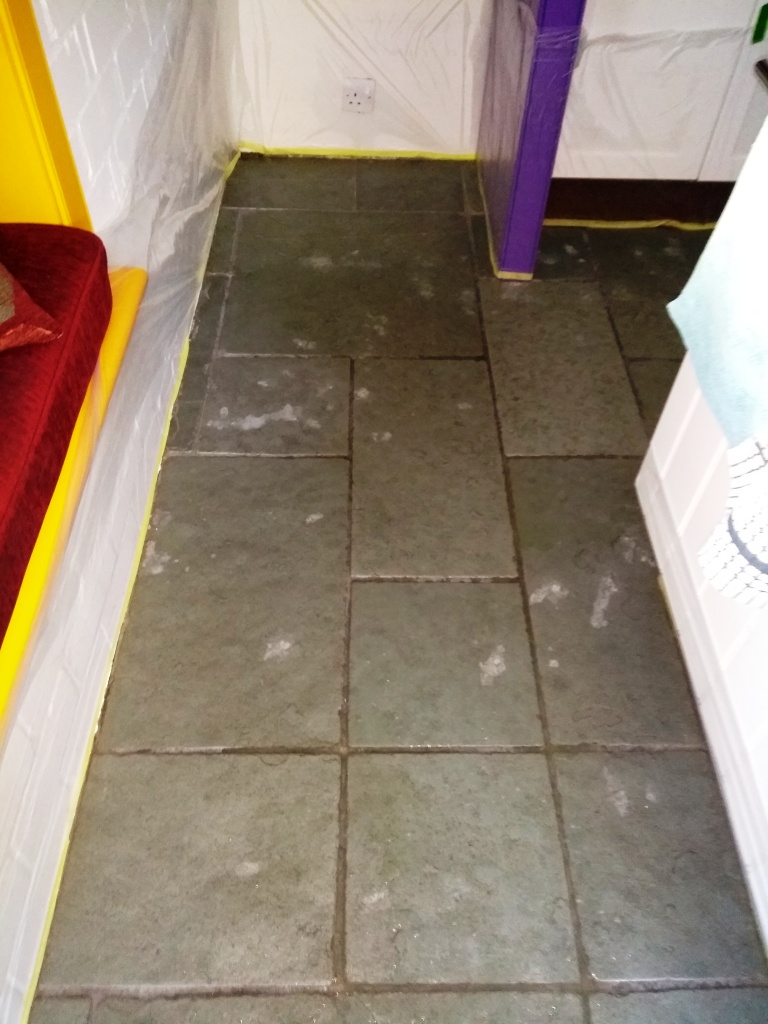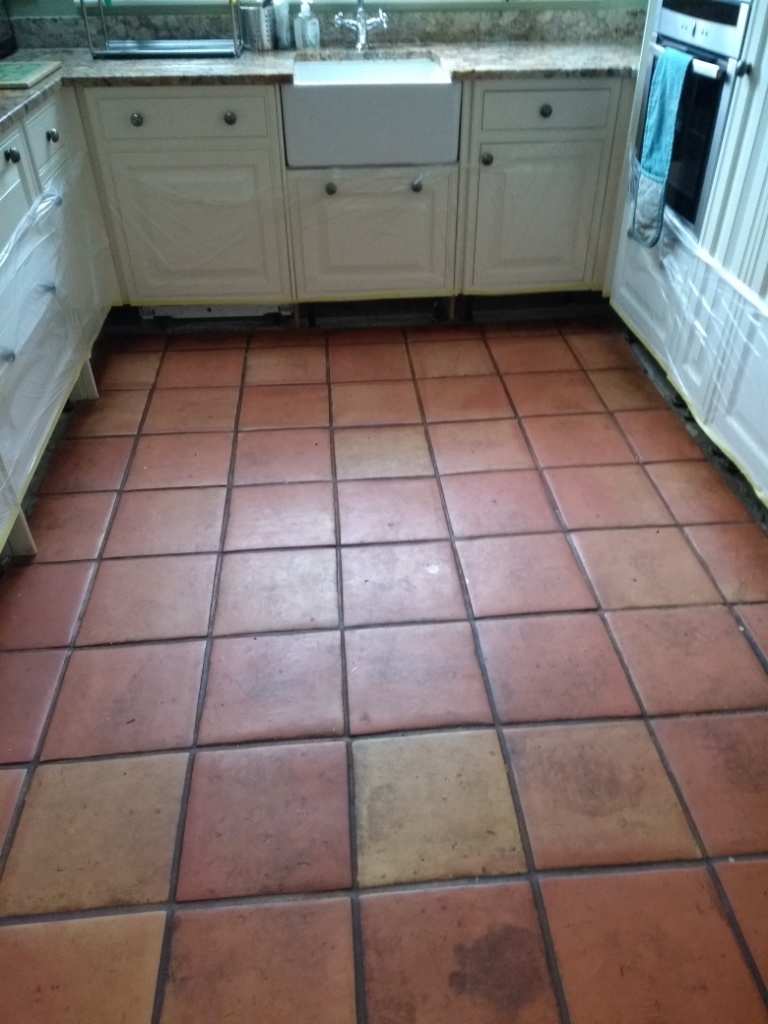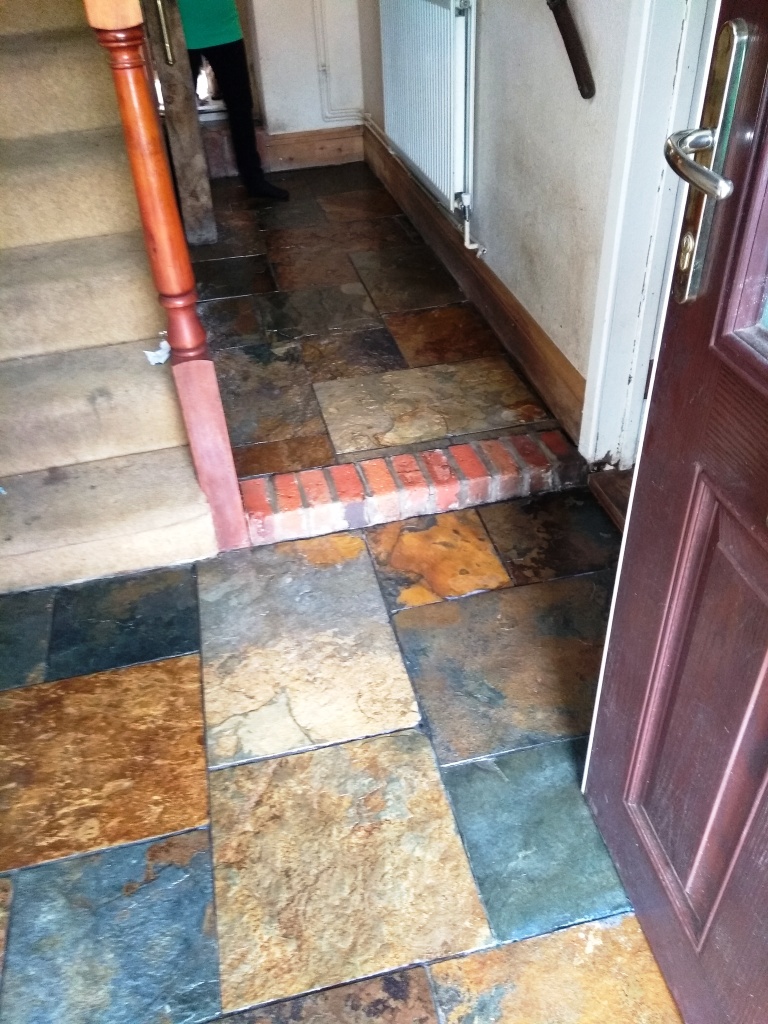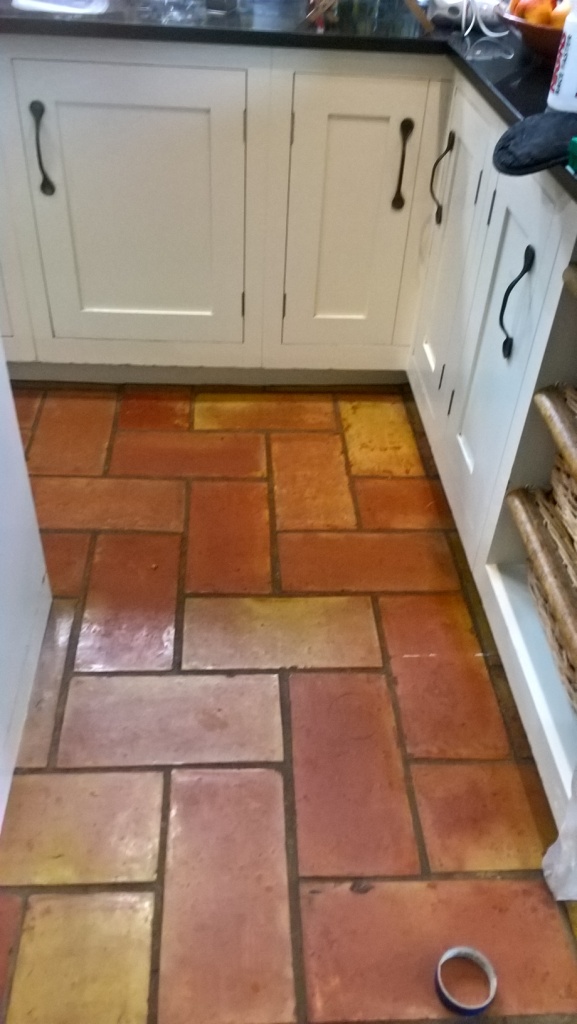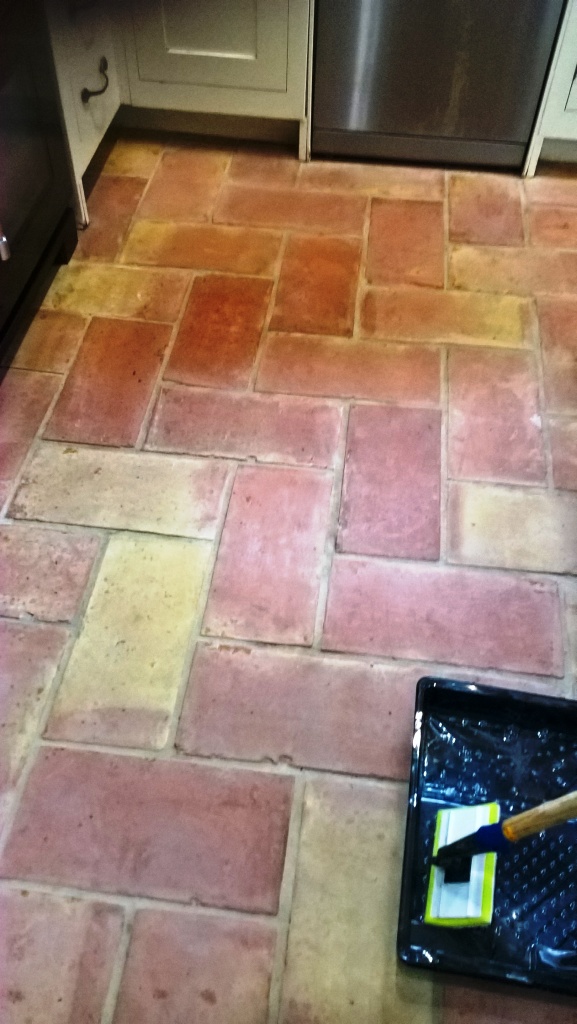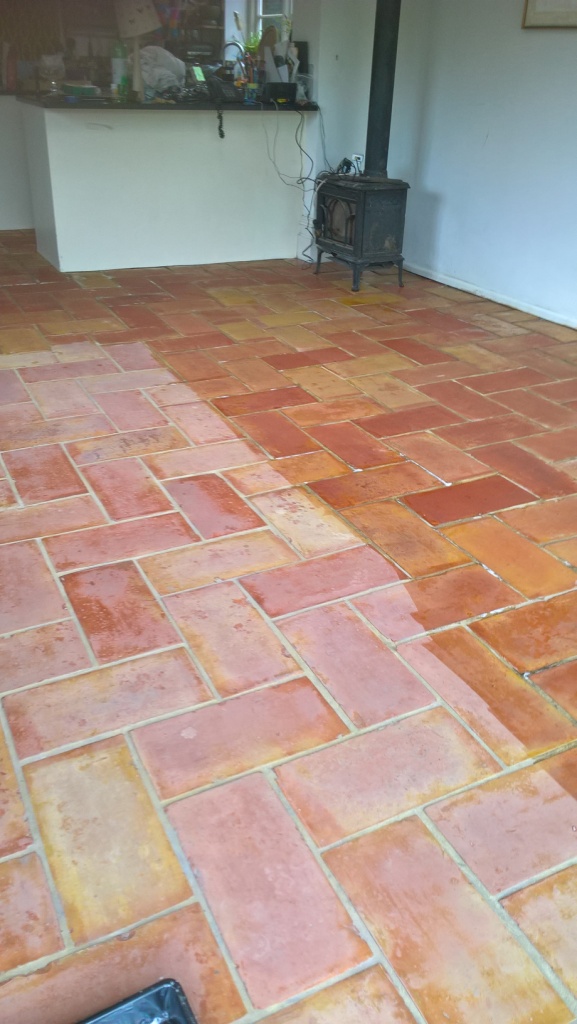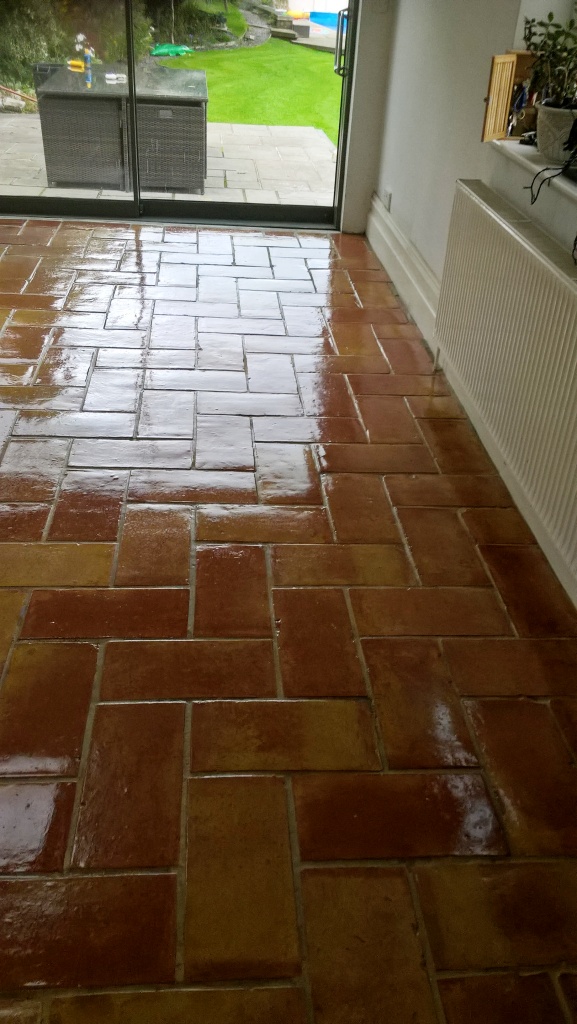Edwardian Hallway Floor Tile Restoration in Dursley
This client from Dursley got in touch regarding their hallway floor tiling which had been badly damaged in two sections during the installation of heating pipework. With the tile and base chopped out the pipes has been laid and backfilled with concrete up to the level of the original floor so it could be covered with laminate. The property was Edwardian and now unhappy with the laminate wanted the floor restored to its original state.

I’m based in Dursley so it wasn’t long before I was able to head over to the property and recommend a way forward. Having inspected the problems first hand I was able to create an accurate quote that would involve removing the backfilled concrete, bringing up the base to the right level and then replacing the missing tiles with matching. The whole floor could then be deep cleaned and sealed to ensure the new tiles matched perfectly with the existing. My quote was accepted, and a date agreed for the work to commence which would take four days.
Cleaning and Repairing an Edwardian Tiled Hallway Floor
Before starting the work, I had managed to source replacements, sizing can be a problem with these older imperial sized tiles however they are usually not too difficult to find.
The first day started with the removal of concrete from the damaged area, this proved difficult as there were water pipes just under the surface and naturally, I didn’t want to disturb these. So with just the use of hand tools I moved slowly and carefully to remove the concrete. Before leaving I brought up the level of the exposed subfloor using self-levelling cement which covered the exposed pipework and formed a level flat base on which I could fix the replacement tiles
Day two was spent tiling, followed by grouting. It wasn’t a large area but there were some intricate cuts to manage and a black and white chequered border to replace. Needless to say, this took up most of the day.
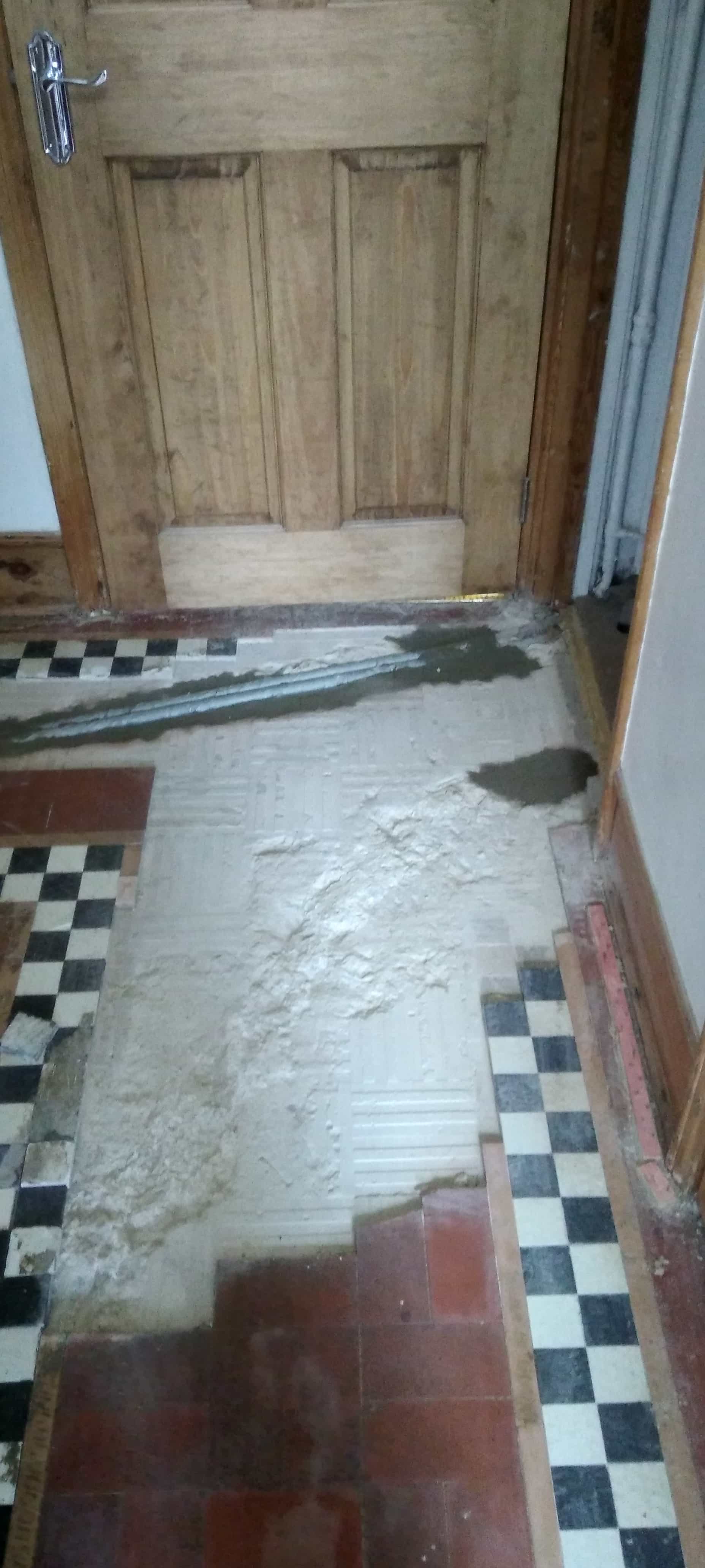 |
 |
I left the floor to settle a couple of days then returned to deep clean the hallway using Tile Doctor Acid Gel worked in with a 200-grit pad fitted to a buffing machine. This was then rinsed off with minimal water and extracted with a wet vacuum. The floor was inspected and any stubborn areas re-treated. After a quick final rinse and extract the floor was left to dry off fully.
You do have to be careful with these old floors which don’t have a damp proof membrane though as using too much water can take a long time to dry out, hence the use of a gel cleaning product and minimal water.
Sealing an Edwardian Tiled Hallway Floor
Once cleaned I left the floor to dry out for 2 days before returning. I know from experience its not a good idea to apply sealer to a damp floor as the results can be patchy so its always a good idea to allow plenty of time for this.
To seal the floor, I used multiple coats of Tile Doctor Seal and Go Extra which has a modern acrylic formula that will allow the floor to breathe and ensure any moisture can pass through the tile and evaporate at the surface. The sealer will protect the tiles from dirt becoming ingrained in its pores and enhance their appearance; the new sealer also makes it easier for the new and old tiles to blend better.
 |
 |
My client was very pleased with the transformation and so happy that the floor had been restored to its original condition. Before leaving I took time to discuss aftercare and for this floor I recommended the use of Tile Doctor Neutral Tile Cleaner, it’s a mild but effective cleaner that is ideal for maintaining sealed tiles.
Professional Restoration of an Edwardian Tiled Hallway in Gloucestershire
Edwardian Hallway Floor Tile Restoration in Dursley Read More »


